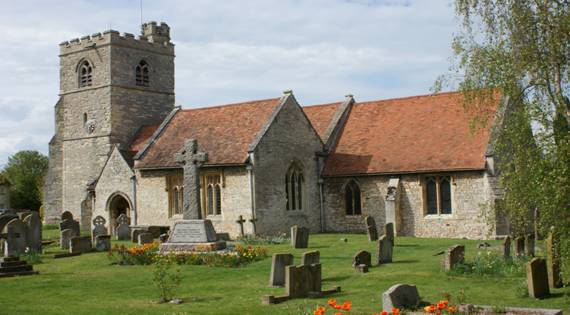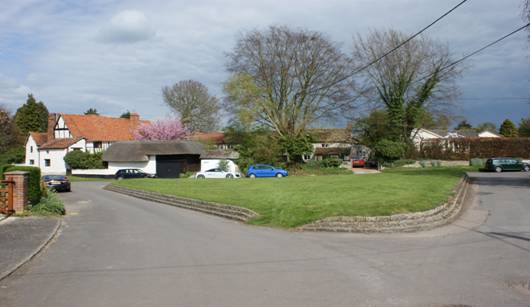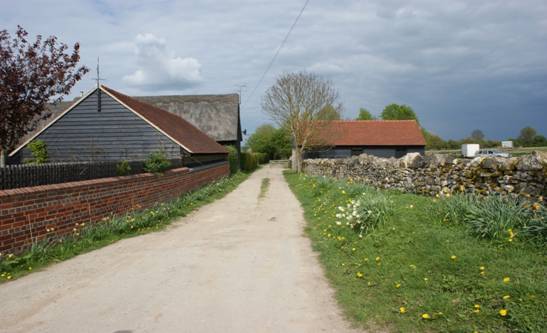 |
| Home | Manchester | London | Birmingham | USA | Australia | New Zealand | Buckinghamshire | Oxfordshire | Contact Peter |
Buckinghamshire
The CROTON family are recorded in a number of Buckinghamshire parishes, in particular:-
| Halton | 1715 – 1800 | (28 references) |
| Cuddington | 1748 – 1905 | (116) |
| and seven other parishes | 1548 – 1811 | (9) |

Cuddington Parish Church
In the middle of the 19th century, CROTON was one of the ten most commonly occurring surnames in Cuddington. Census returns show that most male members of the family had occupations relating to agriculture, predominantly as labourers, several wives are recorded as being lace makers.

Previously site of the village pond (Census Town Pond)

Dirty Lane, Cuddington – No longer has any houses on it
The parish records of Halton show the need to be cautious about the spellings of surnames and yet aware of the fact that names that at first sight may well appear not to be related, in fact are. In an 85 year period there are seven recorded different spellings of the surname of individuals from the same family. Those spellings are : Croton, Crowton, Crawton, Crotten, Crotton, Croten and Croughton. It was a period of phonetic spelling, before even common words were consistently spelt.
By the middle of the century the drift away from rural Buckinghamshire had begun. The financial and industrial centres of England appeared to be more attractive than the uncertainty of employment and lack of opportunity in agriculture. These hopes were not always realised and on occasions families moved on again from their initial destination to more distant locations abroad. In spite of the great distances and the unknown, the countries of U.S.A., Australia and New Zealand were soon to be settled by our ancestors.
As early as 1835, Richard Crowton (b. Cuddington 1792), his wife and seven children received government sponsored migration to the village of Padfield, near Glossop, Derbyshire. Richard, along with eight other families went to work for the mill firm of Benjamin Waterhouse & Co. At the time there was considerable demand for labour from the cotton towns to the south, east and north of Manchester and families were drawn from many parts of England. Of the seven children, only three survived to have families of their own. Abraham (b. Cuddington 1820) and Amos (b. Cuddington 1824) both married at Manchester Cathedral (1845 and 1846 respectively) and later migrated to Detroit, USA. Abraham died there in 1875 and Amos in 1894. Only William (b. Cuddington 1829) remained in the mill area to the south east of Manchester, dying in 1914. Descendants of William still live in the locality today.
At the same time, Robert (b. Cuddington 1800) and Thomas (b. Cuddington 1802) also made the move north to the same region. Robert, his wife Sophia and four children moved to work in the mills of Ashton, having a child, Robert, baptised there in 1836. Thomas and his wife Ann had seven children prior to moving, although it is not known with any certainty how many had survived to migrate with them. Their first child to be baptised in Ashton was Hannah in 1836, although she died the same year.
Robert (b. Ashton 1836) was later to migrate to New Zealand, where he died in 1908. The families who moved north to work in the mills were to find that life could be equally harsh and unpredictable there, hence no doubt why the descendants of Richard and Robert took the adventurous step of migrating with their families to a new and developing country many thousands of miles away.
Samuel Croton (b. Cuddington 1833) found himself in conflict with local villagers and the law on a number of occasions, as documented in the local press, migrated to Australia in 1873 with his wife and six children. Sadly the youngest, Elizabeth (b. Cuddington 1871), died at sea.